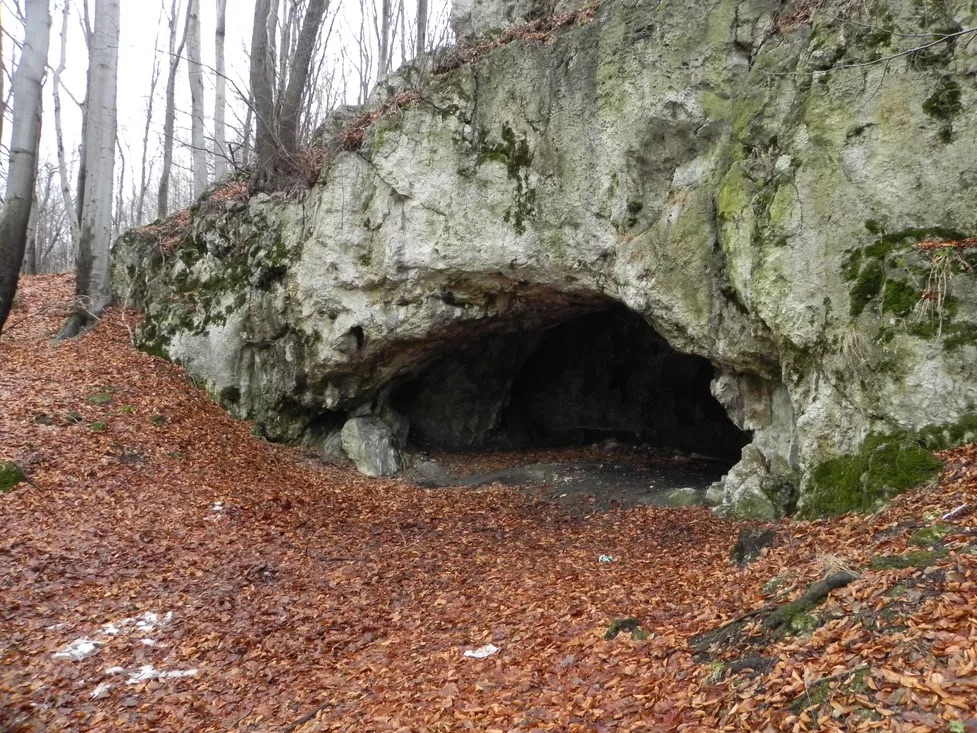Anthropology
Related: About this forumGruesome evidence of cannibalism in Poland 18,000 years ago
Evrim Yazgin
Cosmos science journalist
An archaeological site at the Maszycka Cave in southern Poland reveals ancient burial rituals of late Ice Age humans, including dissection and cannibalism.

The entrance to the Maszycka Cave. Credit: Darek Bobak.
The researchers suggest that this could be linked to violence between groups of ancient humans at the end of the last Ice Age.
Upper Palaeolithic (50,000–12,000 years ago) human remains were first discovered at the Maszycka Cave more than 100 years ago. Among the human bones were stone and bone tools, and remains of hunted prey.
The ancient people are associated with an Ice Age society that existed 20,000 to 14,500 years ago. This Magdalenian culture is known for its impressive art, including famous cave paintings at Lascaux in southwestern France.
Magdalenian culture is preserved in sites as geographically diverse as England, France, Portugal and Poland.
More:
https://cosmosmagazine.com/history/archaeology/poland-ancient-human-cannibalism/
GreenWave
(11,786 posts)Judi Lynn
(163,980 posts)The bones and skulls were found strewn among animal remains, a burial that was meant to humiliate a conquered rival even after defeat
Eli Wizevich
History Correspondent
February 10, 2025

Maszycka Cave in southern Poland, where archaeologists unearthed 18,000-year-old bones that show evidence of human manipulation Darek Bobak
Archaeologists in Poland have discovered widespread evidence of cannibalism among prehistoric humans who gathered in Maszycka Cave, near modern-day Krakow, some 18,000 years ago.
The findings, published in the journal Scientific Reports, are based on advanced 3D imaging of 63 human bone samples dated to the Magdalenian period. Sixty-eight percent of the samples show evidence of human manipulation, including cut marks and scratches consistent with cannibalistic practices like extracting muscles, bone marrow and brain matter for consumption, according to a statement.
The discovery offers new insights into the cultural and mortuary practices of prehistoric Poland. It also forms part of a larger story about violence during a period of mass migration across Europe.
Maszycka Cave is “the remnant of an encampment of a group of people who arrived 18,000 years ago from Western Europe,” following the path of retreating glaciers from their cave art-filled dwellings in Spain and France to settle areas of the continent, including present-day Poland, Marta Połtowicz-Bobak, an archaeologist at the University of Rzeszow, tells the Polish Press Agency (PAP), per Notes From Poland’s Agata Pyka.
More:
https://www.smithsonianmag.com/smart-news/butchered-human-remains-found-in-a-polish-cave-suggest-these-prehistoric-people-cannibalized-their-enemies-180986032/
Judi Lynn
(163,980 posts)Paleolithic culture cannibalized their enemies — and maybe their friends as well
by Mihai Andrei
February 12, 2025
Reading Time: 6 mins read
Edited and reviewed by Zoe Gordon
In the 19th century, archaeologists in Poland unearthed a stunning cave filled with prehistoric secrets. The Maszycka Cave, as it’s called, once sheltered Magdalenian people 18,000 years ago. Now, a new study offers compelling evidence that the cave was the site of a grisly ritual — or perhaps something even darker. Did these ancient people consume their enemies?

We don’t know much about the Magdalenians, but what we do know is unsettling. Unlike earlier cultures that practiced more traditional burials, Magdalenian groups engaged in bizarre mortuary behaviors. These included on defleshing, disarticulation, and repurposing human bones. Some remains were crafted into artifacts like skull cups and personal ornaments, and others bore intricate carvings.
Scholars have debated whether these practices were purely ritualistic or had a more practical component. Maszycka Cave, located in southern Poland, provides a significant dataset for examining these questions.
Initial research in the 1990s posited that the site contained evidence of skull selection, possibly for ritual purposes. However, the latest analysis of newly examined postcranial remains, combined with a re-evaluation of cut marks and breakage patterns, suggests a more complex and possibly darker practice — cultural cannibalism.
Evidence for cannibalism
The latest study analyzed human remains from at least ten individuals — six adults and four juveniles. Astonishingly, two-thirds of the bones exhibit human-induced modifications, including cut marks, percussion marks, and breakage patterns consistent with marrow extraction.
More:
https://www.zmescience.com/science/news-science/paleolithic-culture-cannibalized-their-enemies-and-maybe-their-friends-as-well/
marble falls
(68,897 posts)jeffreyi
(2,457 posts)Humans may be easier to catch than wily wild animals.